The six major museums managed by the LCSD are: the Hong Kong Museum of Art, the Hong Kong Museum of History, the Hong Kong Museum of Coastal Defence, the Hong Kong Science Museum, the Hong Kong Space Museum and the Hong Kong Heritage Museum. These museums acquire, conserve, research on, exhibit and communicate for the purposes of study, education and enjoyment, material evidence of people and their environment.
In addition, the Department also manages the Hong Kong Film Archive and six smaller museums, namely the Flagstaff House Museum of Tea Ware, the Lei Cheng Uk Han Tomb Museum, the Law Uk Folk Museum, the Sheung Yiu Folk Museum, the Sam Tung Uk Museum and the Hong Kong Railway Museum.
Hong Kong Museum of Art
The Hong Kong Museum of Art provides a balanced mix of exhibitions and educational programmes to promote the public's interest and understanding of the arts of the world. In 2003, the museum staged 12 exhibitions — seven special and five permanent. Three of the major special exhibitions featured art objects and cultural relics from the Mainland and overseas, including The Private Life of An Old Red Army Man, Selection from the Guoyun Lou Collection of the Shanghai Museum and Desire and Devotion: Art from India, Nepal and Tibet in the John and Berth Ford Collection. In addition, Hong Kong Cityscapes�XInk Painting in Transition, an exhibition held during the Hong Kong Festival in London, provided an overview of ink painting and its impact on Hong Kong in recent decades, had returned to our galleries for the enjoyment of the local community. The Hong Kong Art Biennial 2003, a significant event in local art circles, featured works by local artists that fully illustrated the recent development of contemporary Hong Kong art and the creativity of the artists.
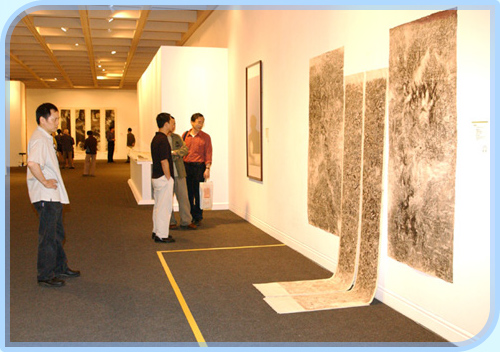 |
 |
 |
Hong Kong Cityscapes — Ink Painting in Transition provides an overview of ink painting and its impact on Hong Kong in recent decades. |
 |
|
The museum organised a wide range of educational and extension programmes, including video shows, special lectures, family programmes, art workshops and guided tours to foster the public's interest in art. It also took part in various major art extension programmes such as the International Museum Day 2003 and Hong Kong and the School Culture Day Scheme 02/03. The museum formed partnership with different arts organisations, groups, tertiary institutions and galleries and presented over 20 fringe exhibitions and programmes for the Hong Kong Art Biennial 2003 exhibition, making it a territory-wide event. The exhibitions, together with the education and extension activities, attracted more than 217,000 visitors during the year.
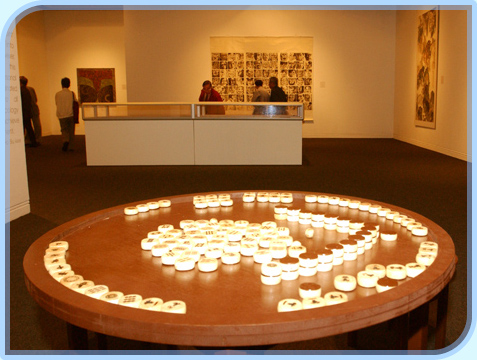 |
 |
 |
Recent trends in Hong Kong's art scene and its development are highlighted in the Hong Kong Art Biennial 2003. |
 |
|
Flagstaff House Museum of Tea Ware
Situated in Hong Kong Park, the Flagstaff House Museum of Tea Ware is a branch museum devoted to the display of Chinese tea ware and the promotion of tea culture.
As part of the Museum of Tea Ware's mission to foster tea drinking culture and enhance creativity in the art of pottery tea ware, a competition was organsied to invite Hong Kong potters to design ceramic arts on tea drinking.
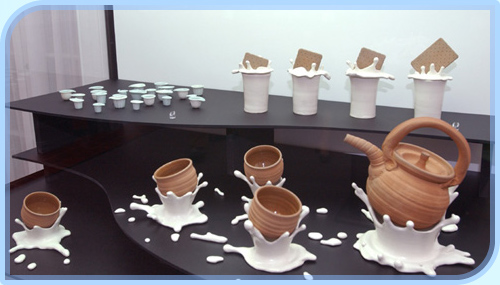 |
 |
 |
Yuanyang: An Exhibition of Coffee and Tea Vessels features over 100 pieces of ceramic sculptures. |
 |
|
Hong Kong Museum of History
Throughout the year, in addition to The Hong Kong Story permanent exhibition, the Museum of History presented a number of thematic exhibitions including — A Tribute to Heritage: Discovering Hong Kong's Culture and Tradition, 75 Years of Broadcasting in Hong Kong, We Shall Overcome: Plagues in Hong Kong and Sun Yat-sen: from Cuiheng to Hong Kong. Through these exhibitions, different facets of local history and cultural heritage were discussed in detail. The museum also jointly presented four large-scale thematic exhibitions with museums and cultural institutions from the Mainland and overseas, such as War and Peace: Treasures of the Qin and Han Dynasties, Napoleon Bonaparte: Emperor and Man, National Flag, Emblem and Anthem of the People's Republic of China and Boundless Learning: Foreign-educated Students of Modern China. These joint presentations not only broadened the public's cultural horizons, but also facilitated the academic and cultural interflow between Hong Kong, the Mainland and overseas. In 2003 the Museum attracted 1,017,240 visitors.
 |
 |
 |
The splendours of French culture and imperial life during the 18th and 19th centuries are reflected in the Napoleon Bonaparte: Emperor and Man exhibition. |
 |
|
To foster public interest in local history and cultural heritage, the museum also organised diversified educational activities and extension services, including guided tours, lectures, workshops, field trips, in-house video programmes, school culture day programmes, travelling exhibitions, international symposia, and the inter-school study projects competition, which were well received. The museum and the Hong Kong Institute of Education also jointly organised the 2nd Junior Curator Training Course which attracted an enthusiastic response from the secondary schools. After receiving training for half a year, the participants assembled exhibitions at the museum's Main Lobby in November.
The Hong Kong Museum of History manages three branch museums, the Museum of Coastal Defence, the Lei Cheng Uk Han Tomb Museum in Sham Shui Po and the Law Uk Folk Museum in Chai Wan. These last two museums attracted 37,065 and 31,337 visitors respectively during the year.
Hong Kong Museum of Coastal Defence
Converted from the old Lei Yue Mun Fort in Shau Kei Wan, the Hong Kong Museum of Coastal Defence occupies about 34,000 square metres and it comprises three main areas: Reception Building, Redoubt and Historical Trail. The permanent exhibition galleries are located in the Redoubt, which houses the standing exhibition 600 Years of Coastal Defence in Hong Kong. The exhibition depicts Hong Kong's history of coastal defence from the Ming and Qing period, the British period, the Japanese invasion to the period after Hong Kong's reunification with China. Visitors may also explore the military relics in the Redoubt and on the Historical Trail, such as the gun batteries, torpedo station, caponiers and magazines.
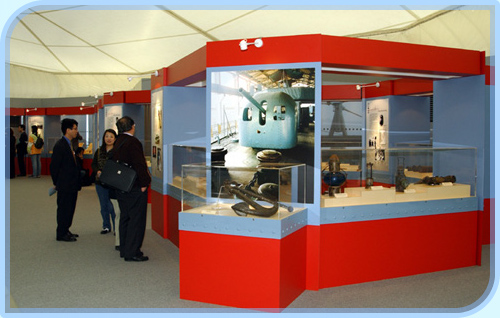 |
 |
 |
The fluctuations in modern Chinese history are reflected in the cultural relics of the renowned gun boat Zhongshan. |
 |
|
Thematic exhibitions were arranged during the year on the Cultural Relics of the Zhongshan Gun Boat, the Cultural Relics of the Fireboat Alexander Grantham (jointly organised with the Fire Services Department) and Archery Traditions of Asia.
The museum also organised a wide variety of educational activities, such as guided tours to the galleries and the Historical Trail, lectures on specific topics, family workshops, demonstrations and field trips to arouse public interest in the military history and coastal defence of Hong Kong. The exhibitions and activities attracted 213,895 visitors.
Hong Kong Science Museum
On loan from a supplier in the US, Grossology: The (Impolite) Science of the Human Body was held from November 22, 2002 to March 23, 2003. It explained how and why the human body produces the 'mushy, oozy, crusty, scaly, stinky things that many people think are gross'. Animatronics and interactive exhibits were used to actively engage visitors. A total attendance of 153,797 was registered during the exhibition period.
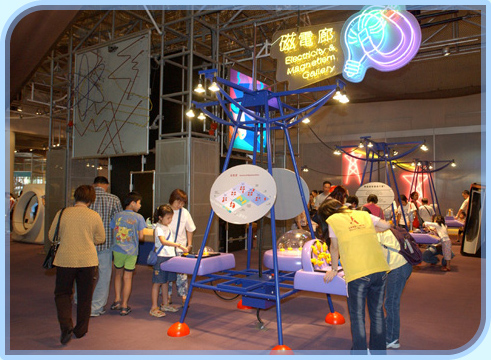 |
 |
 |
The 'hands-on' appeal of the Hong Kong Science Museum. |
 |
|
The exhibition Albert Einstein: Man of the Century was held in the foyer of the Science Museum from February 12 to April 21. Based on original material housed at The Albert Einstein Archives, The Jewish National and University Library and the Hebrew University of Jerusalem, the exhibition portrayed Albert Einstein not only as a world-class scientist, but a humanitarian as well. The exhibition consisted of rare photographs and footage on the life of the science master.
The Sciencetunnel exhibition was presented from May 2 to August 3 and attracted 64,870 visitors. It was developed by the Max Planck Society of Germany. Featuring a 170-metre long multimedia tunnel, the exhibition guided visitors through the new dimensions of modern-day research. As visitors passed through the 12 linked stations, they appreciated the latest achievements from the smallest particles of matter to the largest structures in the universe.
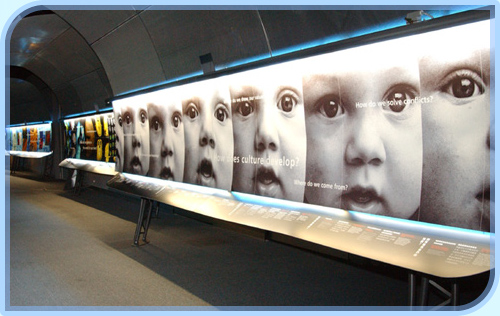 |
 |
 |
The Sciencetunnel exhibition features the latest achievements in science. |
 |
|
To echo the International Museum Day initiated by the International Council of Museums, the Leisure and Cultural Services Department presented the International Museum Day programme from May 16-18 with Discovering Museums as its theme. Taking the role as an event co-ordinator, the Science Museum worked with 20 public museums and cultural institutions to organise over 200 entertaining and educational programmes including a 3-day Museum Panorama held at the Hong Kong Cultural Centre Piazza which attracted nearly 20,000 participants. The museums, which offered free admission to the public during the period, received 64,200 visitors.
The SARS and Viruses exhibition was held in the foyer of the Science Museum from June 30 to December 20. Developed and produced entirely in-house, this exhibition was designed to educate the public on the science of the SARS disease as well as viruses. Among the exhibits on display was a 3D model of a coronavirus and an infrared forehead temperature scanner.
Wildlife Photographer of the Year was presented from October 10 to December 10 and featured the winning entries of the 2001 and 2002 Wildlife Photographer of the Year Competitions organised by the Natural History Museum in the UK. Combining artistic perspective, technical expertise and the natural beauty of animals across arid deserts, in soaring mountains, through dense forests and below the oceans, these 200 images portrayed the perfect harmony of nature and carried the message of environmental protection.
In commemoration of China's first successful manned spaceflight on October 15, the exhibition on China's First Manned Space Mission was held from November 1-4 in the Special Exhibition Hall. Among the exhibits was the Re-entry module of the Shenzhou-5 spaceship that carried Colonel Yang Liwei into space and the spacesuit he wore during his epic mission. To facilitate more visitors to see the exhibition, the Science Museum opened continuously non-stop for 76.5 hours, a new record in the history of public museums. The exhibition attracted more than 103,000 visitors.
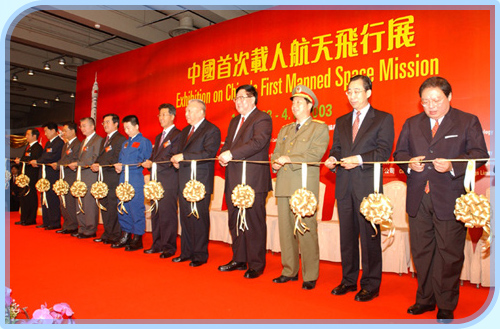 |
 |
 |
Astronaut Yang Liwei (in blue) and other guests at the opening ceremony of the exhibition on China's First Manned Space Mission. |
 |
|
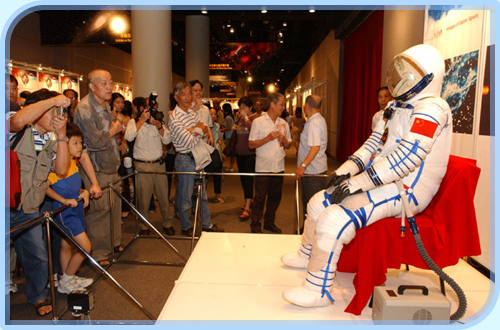 |
 |
 |
The spacesuit worn by astronaut Yang Liwei. |
 |
|
Shortly after the conclusion of the exhibition on China's First Manned Space Mission, a small exhibition China's First Manned Space Mission Exhibition II — Gifts for Hong Kong was presented from December 24, 2003 to March 21, 2004. It showcased presents from the delegation, in particular the working and training suit donated by the astronaut Yang, and two large satellite images covering Hong Kong and the Pearl River delta. Together with these items, the exhibition also featured memorabilia from the aerospace exhibitions held in the museum in 2000 and 2003.
From October to December, the museum joined hands with the Hong Kong Observatory to organise a series of six lectures presented by distinguished meteorologists from the United States, mainland China and Hong Kong. The series introduced meteorological topics of public interest such as El Nino, typhoons, and the change of climate, and was attended by some 1,400 people.
The Science News Corner staged three thematic exhibitions in 2003 — Automatic Face Image and Sketch Recognition, Fruit Fly — Drosophila and Extremes of the Universe — with the aim of introducing scientific research projects currently being conducted in local universities and disseminating knowledge of frontier technology. The exhibitions, jointly developed by the universities and the museum, represented a perfect collaboration between researchers and museum professionals in the promotion of science. The exhibitions in the corner will be renewed regularly to keep abreast of scientific advancement and technological breakthrough.
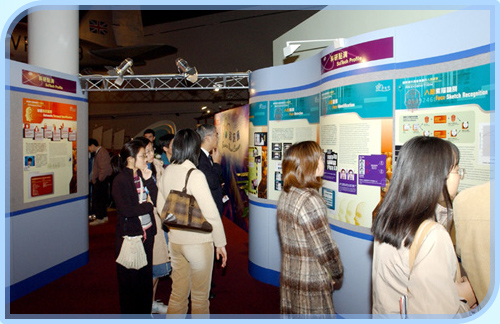 |
 |
 |
The Science News Corner provides the latest information on scientific developments. |
 |
|
As in the previous year, the Teacher Museum Pass Scheme launched by the department encourages teachers to visit museums and to make use of their resources to support classroom teaching. The museum, serving as the co-ordinator of the scheme, arranged orientations for teachers and processed applications for around 2,000 schools.
Throughout the year, the museum worked continuously with educational institutions, universities and professional bodies on a number of special projects to promote science. The Fun Science Competition in February, the Symposium on Environmental Issues for Schools and The 6th Primary Science Project Competition in July, The 36th Joint School Science Exhibition in August, and Joint Schools Robotic Olympiad in November were just some of the popular projects.
In 2003, the museum's exhibitions and extension activities attracted more than 870,000 visitors and participants.
The Hong Kong Space Museum
The Hong Kong Space Museum, dedicated to promoting astronomy and space science to the public, strengthened its astronomical observation activities in 2003. It remained open till the small hours on the days of Mars Opposition on August 28 to 30 to allow over 5,000 people to observe the planet through astronomical telescopes. A Sidewalk Astronomy was held in conjunction with the Astronomical Society in October on the Tsim Sha Tsui waterfront. About 50 telescopes were set up for viewing by over 1,500 people. In addition, to cope with the successful launch of China's first manned spaceflight in October, the museum organised a number of activities including exhibitions, displays of a model of the spacecraft and workshops. Related educational material was also produced.
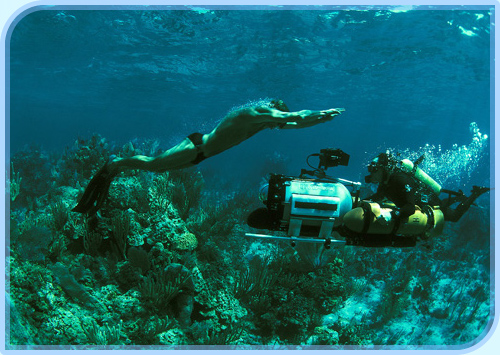 |
 |
 |
The Omnimax films Oceanmen: Extreme Dive and Grand Canyon shown in Hong Kong Space Museum. |
 |
|
 |
 |
The museum published the Astrocalendar 2004 and launched two Sky Shows — Legends of Manned Spaceflights and Mars Odyssey; four Omnimax films — Space Station, Grand Canyon — The Hidden Secrets (Millenium Version), Oceanmen: Extreme Dive and Straight Up! Helicopters in Action; and six School Shows — Sun, Moon and Stars, The New Solar System, Journey to Space, Amazing Journeys, Cosmic Voyage and The Greatest Places. They attracted some 290,100 people. The museum also organised 190 extension activities for over 40,700 participants. Fourteen temporary special exhibitions together with the permanent exhibits in the Hall of Astronomy and Hall of Space Science attracted more than 325,000 visitors.
Hong Kong Heritage Museum
The Hong Kong Heritage Museum fosters the cultural identity of the local community and promotes Hong Kong's heritage to overseas visitors. It features a wide variety of programmes on local history, arts and culture.
Food Culture was the theme of the Heritage Museum's programmes in 2003/04. A series of exhibitions and educational activities was organised in 2003, among which were thematic exhibitions entitled More Than Just Food — Ceramic Art Exhibition and Hong Kong's Food Culture. The first exhibition featured 12 local ceramic artists producing appealing menus designed for each month of the year as well as imaginative food ware to serve them on. The second exhibition reviewed the history of local food, investigated the changes that had taken place in eating establishments, and looked at food packaging in Hong Kong.
Other thematic exhibitions included Life in China Around the May Fourth Movement: Sidney D. Gamble's Photographs of China 1908-1932, Alan Chan: The Art of Living, "Woman" Wanted, Fashion Parade: Women's Wears in Changing Hong Kong and Mapping Asia — The 18th Asian International Art Exhibition.
 |
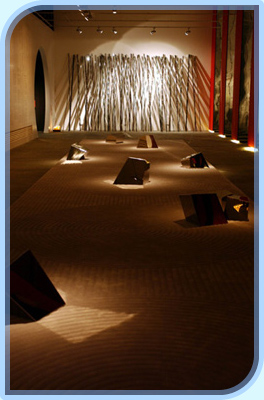 |
 |
 |
| Alan Chan — The Art of Living showcases the unique ability of the artist to synthesise traditional Chinese arts and crafts with the motifs of modern design. |
 |
|
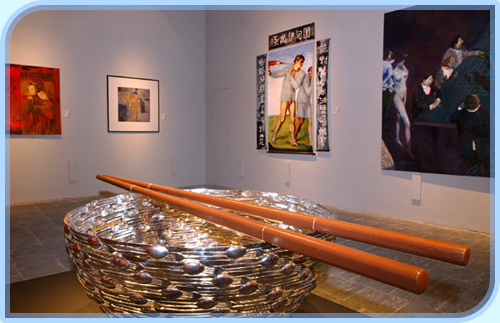 |
 |
 |
Contemporary artistic developments in the Asia Pacific are mirrored in Mapping Asia. |
 |
|
A total of 1,138 educational and extension activities were organised for the public. A new initiative, the MuseKids was introduced in July to provide children from kindergartens through to Primary Six with opportunities to explore the history, art and culture of Hong Kong. Since the scheme was launched, nearly 4,600 'kids' had become members by the end of the year.
The museum's exhibition programmes, together with its educational and extension activities, attracted 455,629 visitors and participants in 2003.
The Heritage Museum manages three branch museums, the Sam Tung Uk Museum in Tsuen Wan, the Hong Kong Railway Museum in Tai Po Market and the Sheung Yiu Folk Museum in Sai Kung. Together they attracted almost 400,000 visitors in 2003.
Hong Kong Film Archive
The Hong Kong Film Archive's major functions are to acquire, preserve, catalogue and document Hong Kong films and related materials. Through the Archive's acquisition and conservation efforts, images on Hong Kong shall be preserved, bearing witness to our history and social development. Located in Sai Wan Ho, the Film Archive's facilities include a 127-seat cinema, a 200-square-metre exhibition hall, four temperature-and-humidity-controlled film stores and a resource centre with a fully computerised cataloguing system. It holds some 5,600 films and around 600,000 items of related materials. The titles go as far back as an 1898 Edison Travelogue on Hong Kong and as recent as box-office hits of the 1990s.
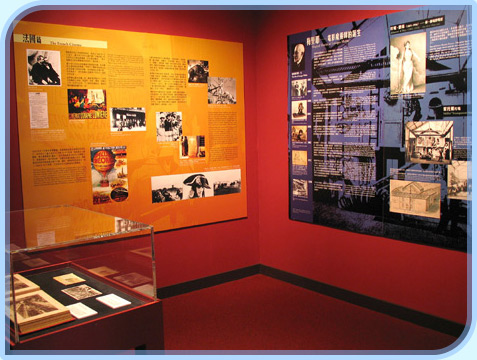 |
 |
 |
The Attraction and Magic — Early European Cinema exhibition at the Hong Kong Film Archive. |
 |
|
During the year, the Archive organised nine exhibitions, 460 screenings, 14 seminars, 33 school activities and 12 guided tours, which together entertained over 160,000 visitors.
It also published a number of publications including Hong Kong Filmography IV (1953-1959), the Shaw Screen: A Preliminary Study and Cantonese Opera Film Retrospective (Revised Edition).
Art Promotion Office
The Art Promotion Office organises wide-ranging activities to highlight the local visual arts by focusing on public and community art projects. The office places great importance in undertaking projects with different partners, which help to further enhance art appreciation and participation among the public.
The Gallery Ferry Project was jointly organised with the Hong Kong Arts Development Council, New World First Ferry Service and New World First Bus Services. Three installation works and 20 two-dimensional works were displayed on three ferries and at Pier 5 in Central from May 2003 to January 2004.
The second Artists in the Neighbourhood Scheme was another partnership project with various partners. In 2003, works of six artists and an art group were displayed at different LCSD venues, MTR stations, hospitals and shopping malls. In addition, the office launched a community art project with Art in Hospital, A New Beginning/A New Day, in late 2003 to sustain the efforts in bringing visual arts to hospitals, health workers and patients.
The office is also responsible for the management of the Hong Kong Visual Arts Centre. Its facilities, including art studios and an exhibition hall, are open for public hiring at subsidised rates. The centre emphasises training in the visual arts. The second Art Specialist Course, which covered five disciplines in visual arts — ceramics, printmaking, painting, sculpture and ink painting — was specially designed for art lovers who wished to pursue structured professional art training. The nine-month course ended in October with an exhibition at the centre featuring the works of the 62 graduating participants.
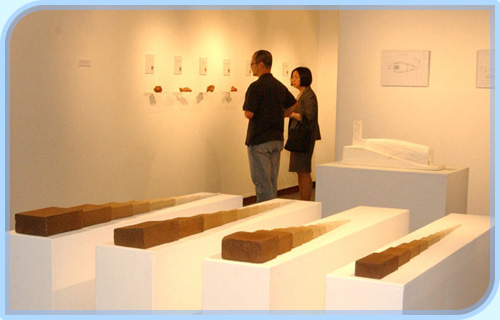 |
 |
 |
Moulding World — Ceramic Works by Annie Wan, held at the Hong Kong Visual Arts Centre, is one of the exhibitions under the Artists in the Neighbourhood Scheme. |
 |
|
|